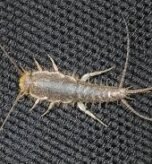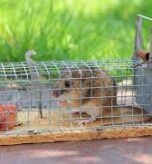. Introduction: The Uninvited Guests in Your Home
Discovering a bed bug infestation is an incredibly stressful experience, particularly as these pests have seen a global resurgence. Catching an infestation early is paramount. Prompt detection can save you significant time, money, and effort compared to tackling a widespread problem. This guide equips you with effective strategies for detecting, treating, and preventing bed bugs, helping you reclaim your peace of mind and your home.
II. Understanding the Enemy: What Are Bed Bugs?
Anatomy of a Bed Bug
Adult bed bugs are small, oval, flat insects, typically measuring 4–5 mm long. Usually mahogany-brown, their appearance transforms after feeding; they become deep purple or red and their bodies elongate, resembling a torpedo more than a flat disc.
Young bed bugs, known as nymphs, start smaller than adults and appear nearly colorless or translucent whitish-yellow. As they mature, they become browner. A blood meal causes a nymph to plump up and appear bright red. Because of their incredibly thin bodies, roughly the width of a credit card, these insects can squeeze into surprisingly tiny spaces.
Behavior and Habits
Bed bugs are primarily nocturnal, with peak activity occurring just before dawn. Warmth and carbon dioxide, such as from body heat or central heating, attract them. They can travel 5-20 feet from their hiding places, or “harborage,” to feed on a host. If hungry, a bed bug will even seek a host in full daylight.
A bed bug requires a blood meal for each of its five immature life stages to molt and develop. Females also need blood to mate and produce eggs. A single female can lay 1 to 3 eggs per day, leading to 200-500 eggs over her 6-12 month lifetime. Remarkably resilient, bed bugs can survive for months without eating.
III. The Hunt: Masterful Detection Strategies
Why Visual Inspection is Paramount
While itchy bites are often the first clue of potential bed bugs, they serve as a poor indicator of an infestation because bite reactions vary widely among individuals. Some people do not react to bites at all, which allows an infestation to grow unnoticed. Therefore, looking for physical signs provides the most accurate way to identify an infestation, especially a small one.
Your Inspection Toolkit
To conduct a thorough inspection, you need a flashlight and keen eyes. Dedicate sufficient time to the process; if you normally spend 5 minutes, take 10. People often miss signs because they are not used to what they are looking for. Turning off the lights before you begin can encourage the nocturnal insects to emerge.
What to Look For (and Where)
You must search for multiple forms of physical evidence, as a single sign can sometimes be misleading.
Live Bugs and Shed Skins
First, look for the insects themselves in their various life stages. Adults are reddish-brown, while young nymphs can appear white or clear. As bed bugs grow, they shed their outer skins, leaving behind translucent, hollow exoskeletons. These cast skins are a definitive sign of an active infestation and can be found along mattress seams, behind headboards, and along baseboards.
Bed Bug Eggs
Finding eggs is a critical sign of reproduction. They are tiny, about 1mm long, and resemble small grains of rice. Ranging from pearl-white to pale yellow, their oval shape is distinctive. A sticky, glue-like coating on freshly laid eggs keeps them secure, even on vertical surfaces, making them difficult to remove by hand. You will often need to scrape them off a surface. Common places to find eggs include:
- Mattresses, box springs, and bed frames
- Pillows and pillowcases
- Nightstands, dressers, and couches
- Cracks in walls, baseboards, and furniture
- Rugs, carpets, and even book bindings
Fecal and Blood Marks
These marks are distinct signs of bed bug activity. Dark spots, about 1mm in size, are bed bug excrement (digested blood). They appear as dark brown or black spots and may bleed into fabric like a marker. Unlike the granular feces of German cockroaches, these spots feel smooth. Red or rusty stains on fabrics indicate crushed bed bugs. You will often find fecal spots in groups along mattress seams, behind headboards, and in other hiding places.
Prime Hiding Spots and Aggregations
Bed bugs are experts at hiding. Use a credit card as a guide; if it can fit into a crack, so can a bed bug. Start your search in the immediate bed area:
- Piping, seams, and tags of mattresses and box springs
- Cracks on the bed frame and headboard
- Holes for set-in screws and where fabric is stapled to the wood frame
Bed bugs often congregate in clusters that contain live bugs, fecal spots, cast skins, and eggs. These “aggregations” can sometimes be mistaken for mold. In a heavy infestation, bed bugs will move further from the bed into locations like chair seams, curtain folds, drawer joints, electrical outlets, and under loose wallpaper.
IV. Beyond the Bite: The Often-Misunderstood Clues
The Unreliable Nature of Bed Bug Bites
It is crucial to understand that bites are a poor diagnostic tool for a bed bug infestation. Medical professionals can easily confuse them with bites from other insects like mosquitoes or with skin conditions such as eczema or hives.
A significant challenge is the great variation in individual reactions. Some people show no reaction at all, meaning an infestation could grow significantly before anyone notices it. While people sometimes describe bites as appearing in a “breakfast, lunch, dinner” pattern (a line or cluster), this is not a consistent presentation for everyone. Typically, you will find bites on areas of the body exposed during sleep, such as the upper arms and shoulders.
The Elusive Bed Bug Odor
Conflicting views exist regarding a distinct bed bug odor. Some pest control professionals claim they rarely smell it unless an infestation is very heavy. However, many individuals report a distinct odor even with minor infestations. Descriptions of the smell are varied and include musty, sickly sweet like rotten raspberries, moldy shoes, or sweaty socks. Your ability to smell them may vary. If you notice an unusual smell without other definitive signs, continue to check for physical evidence.
V. Taking Action: Effective Treatment Strategies
If you discover bed bugs, immediate action is crucial to prevent the infestation from spreading and becoming more difficult to control.
Professional Extermination: The Gold Standard
Hiring a licensed bed bug exterminator is the most recommended path to eliminating an infestation. Professionals offer customized treatments, often combining chemicals, vacuuming, and heat. Although expensive, professional services provide the most effective route to complete eradication.
DIY Methods (Use with Caution and Thoroughness)
For those on a budget or looking to take immediate steps, some do-it-yourself methods can be effective if you apply them with extreme thoroughness and caution.
Applying Targeted Heat
Bed bugs and their eggs are highly susceptible to heat.
- Steam Cleaning: High heat from steam (water at 212°F / 100°C) effectively kills bed bugs and eggs without chemicals. Move a high-quality steamer slowly over all infested surfaces, particularly upholstered furniture.
- High-Heat Drying: For clothing and bedding, running items through a dryer on high heat for at least 30 minutes is highly effective. Adult bed bugs and their eggs die within minutes at 122°F (50°C).
- Portable Heating Devices: You can also use devices specifically designed to kill bed bugs to apply targeted heat to belongings.
Executing a Vacuuming Protocol
Vacuuming can help remove bed bugs from infested areas. Use the strongest suction possible and a crevice tool to reach deep into folds and corners. Crucially, you must immediately place the vacuum bag in a sealed plastic bag and dispose of it securely outdoors to prevent re-infestation. Remember to also clean the vacuum’s filter and canister.
Using Mattress-Safe Insecticides
Various mattress-safe insecticides are available. When applying them, tidy the room, then flip the mattress and spray the bottom, focusing on folds, crevices, and surrounding furniture. If you find individual eggs, you can crush them with a tissue or scrape them off with a card before vacuuming them up.
Important Warnings: Do not use isopropyl (rubbing) alcohol to kill bed bug eggs. It requires direct contact, evaporates too quickly to be lethal, and is highly flammable. Likewise, do not use bleach, as its toxicity, potential to damage surfaces, and limited effectiveness against hidden eggs make it a poor choice.
VI. Stopping Them Before They Start: Prevention is Key
Preventing bed bugs is always easier than treating an infestation. Implement these key preventative measures:
- Regular Cleaning: Clean your mattress and sheets regularly and keep your home tidy to reduce hiding spots. Frequent vacuuming helps catch early arrivals.
- Mattress Protection: Use a protective mattress encasement to prevent bed bugs from living within your mattress.
- Post-Travel Routine: Bed bugs often enter homes via luggage and clothing. After traveling, check your luggage thoroughly and wash your clothes immediately in high heat.
- Secondhand Furniture Inspection: Thoroughly inspect any secondhand furniture for pests before bringing it into your home.
VII. Dealing With Bed Bug Anxiety
A bed bug infestation can be incredibly worrying. It is a very common occurrence, and feelings of anxiety, nightmares, and trouble sleeping are normal psychological effects. Recognize that an infestation is not a result of poor hygiene and can happen to anyone. Many people experience bed bugs and successfully remove them. If you feel overwhelmed, consider staying with a friend or family member during the removal process. The best thing you can do is take immediate action, as most infestations are manageable if caught early. If you experience lingering side effects, speaking with a therapist can be beneficial.



